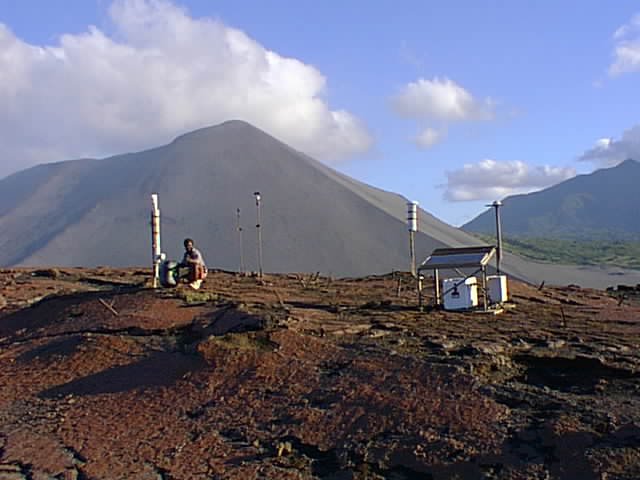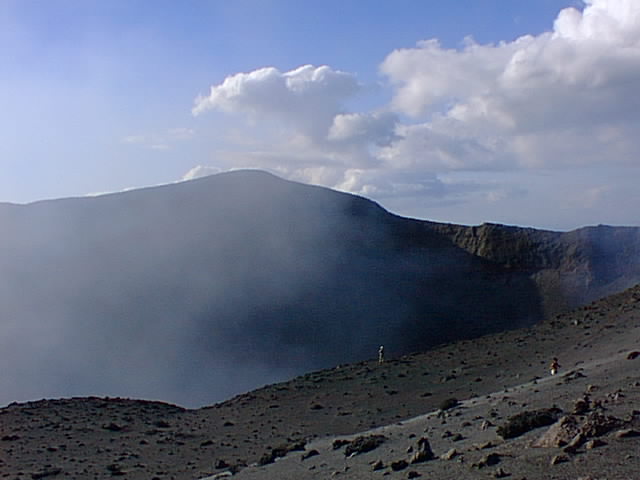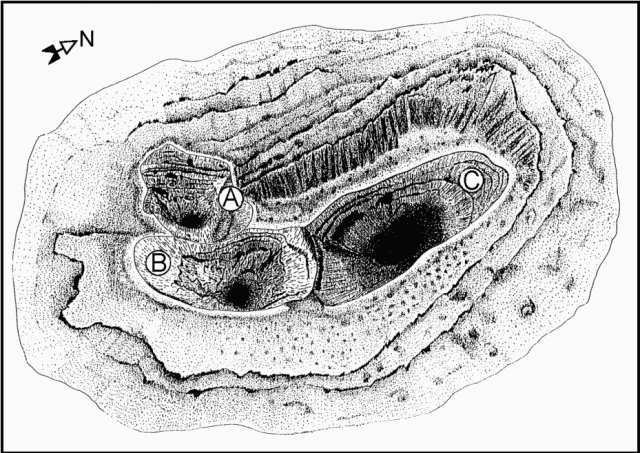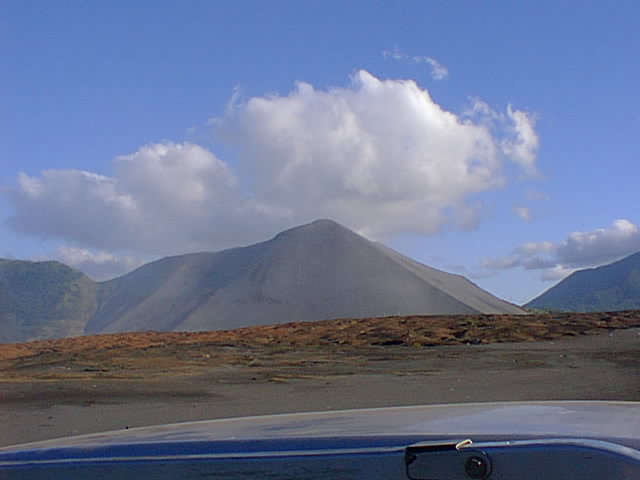Report on Yasur (Vanuatu) — November 1997
Bulletin of the Global Volcanism Network, vol. 22, no. 11 (November 1997)
Managing Editor: Richard Wunderman.
Yasur (Vanuatu) Strombolian eruptions; decreasing seismic activity since March 1997
Please cite this report as:
Global Volcanism Program, 1997. Report on Yasur (Vanuatu) (Wunderman, R., ed.). Bulletin of the Global Volcanism Network, 22:11. Smithsonian Institution. https://doi.org/10.5479/si.GVP.BGVN199711-257100
Yasur
Vanuatu
19.532°S, 169.447°E; summit elev. 361 m
All times are local (unless otherwise noted)
ORSTOM reported in late November that there has been little change in the appearance of Yasur's crater since February 1997. During this interval only craters B and C (figure 11) were active; crater A was quiet. Crater B produced a few explosions and small ash plumes; occasionally small lava bombs (a few tens of centimeter in diameter) reached the lip of the crater.
Seismic signals in 1997 (figure 12), with frequencies of 1-7 Hz, were related to Strombolian explosions and correlated with surface phenomena (Nabyl and others, 1997). All signals were recorded 2 km from the crater (figure 13), relayed to an ARGOS satellite, and then to the receiving station. Regional seismicity accounted for a small percentage of signals and thus had negligible effect on event counts.
 |
Figure 13. The ARGOS-linked monitoring station with Yasur to the N in the background, 2 November 1997. Courtesy of Pascal Gineste, ORSTOM. |
Continuous seismic monitoring since March 1997 (figure 12) revealed a general decrease in Strombolian activity over time. Still, some powerful explosions were recorded during August 1997 (BGVN 22:08). These powerful events occurred only a few times per day and had vertical displacements greater than 60 µm; their scarcity was taken as a further indication of decreased activity. Since October 1993, seismic monitors recorded periods of high activity during December 1993-March 1995 and during May 1996-April 1997; slightly elevated activity occurred during August-October 1995. It was also reported by ORSTOM that an undisclosed radiometric technique suggested that fresh magma entered the system in May 1996.
During 29 July-4 August 1997 a team from the Soci't' de Volcanologie GenŠve (SVG) visited Yasur and made visual and other observations, including some temperature estimates of lavas using an optical pyrometer. The team saw small but almost continuous Strombolian activity in the N vents area. The continuous activity was interrupted by stronger explosions every 1-1.5 hours; the explosions threw lava fragments in all directions. The fragments fell mainly inside the crater but sometimes fell on the NE part of the outside rim; in one instance, a bomb ~1 m in diameter was found still hot on the rim. The stronger phases of the eruption were accompanied by ground vibrations. Small convulsing ash clouds sometimes issued from another part of the vent area, indicating that at least two separate vents were active.
At the S vents area, the SVG team observed gas, ash, and old material suddenly and noisily emitting from different vents during the beginning of their visit; a few to no red lava fragments were projected during these emissions. The activity sounded like a jet engine and caused gases to ignite. Towards the end of their visit, the team observed that the quantity of ash emitted had increased; the eruptions created ash clouds that were easily seen from the volcano's foot.
The SVG team measured temperatures with an infrared (1.55 µm wavelength) optical pyrometer (Optix-G, Keller GMBH., Ibbenburen-Lagenbeck). At an opening in the N vents area, a maximum temperature of 581°C was obtained on a weakly incandescent area. Strong degassing was present around the target at the time of the measurement (2 August).
 |
Figure 16. Photograph looking S at the crater rim of Yasur during a period of quiet activity, 2 November 1997. Courtesy of Pascal Gineste, ORSTOM. |
Reference. Nabyl, A., J. Dorel, and M. Lardy, 1997, A comparative study of low frequency seismic signals recorded at Stromboli (Italy) and Yasur (Vanuatu), New Zealand Journal of Geol. and Geophys. (December issue).
Geological Summary. Yasur has exhibited essentially continuous Strombolian and Vulcanian activity at least since Captain Cook observed ash eruptions in 1774. This style of activity may have continued for the past 800 years. Located at the SE tip of Tanna Island in Vanuatu, this pyroclastic cone has a nearly circular, 400-m-wide summit crater. The active cone is largely contained within the small Yenkahe caldera, and is the youngest of a group of Holocene volcanic centers constructed over the down-dropped NE flank of the Pleistocene Tukosmeru volcano. The Yenkahe horst is located within the Siwi ring fracture, a 4-km-wide open feature associated with eruption of the andesitic Siwi pyroclastic sequence. Active tectonism along the Yenkahe horst accompanying eruptions has raised Port Resolution harbor more than 20 m during the past century.
Information Contacts: M. Lardy, D. Charley, and P. Gineste, Centre ORSTOM, BP 76, Port Vila, Vanuatu, and Départment des Mines et de la Géologie et des Resources en Eaux; J. Tabbagh, Centre de Téléobservation Informatisé des Volcans, CNRS-CRG, Garchy, France; A. Nabyl and J. Dorel, OPG, Centre de recherches volcaniques (CRV), Clermont Ferrand, France; Mf. le Cloarec, Centre des faibles radioactivités CFR, Gif sur Yvette, France; P. Vetch and S. Haefeli, Société de Volcanologie Genève (SVG), C.P. 298, CH-1225, Chene-bourg, Switzerland.





